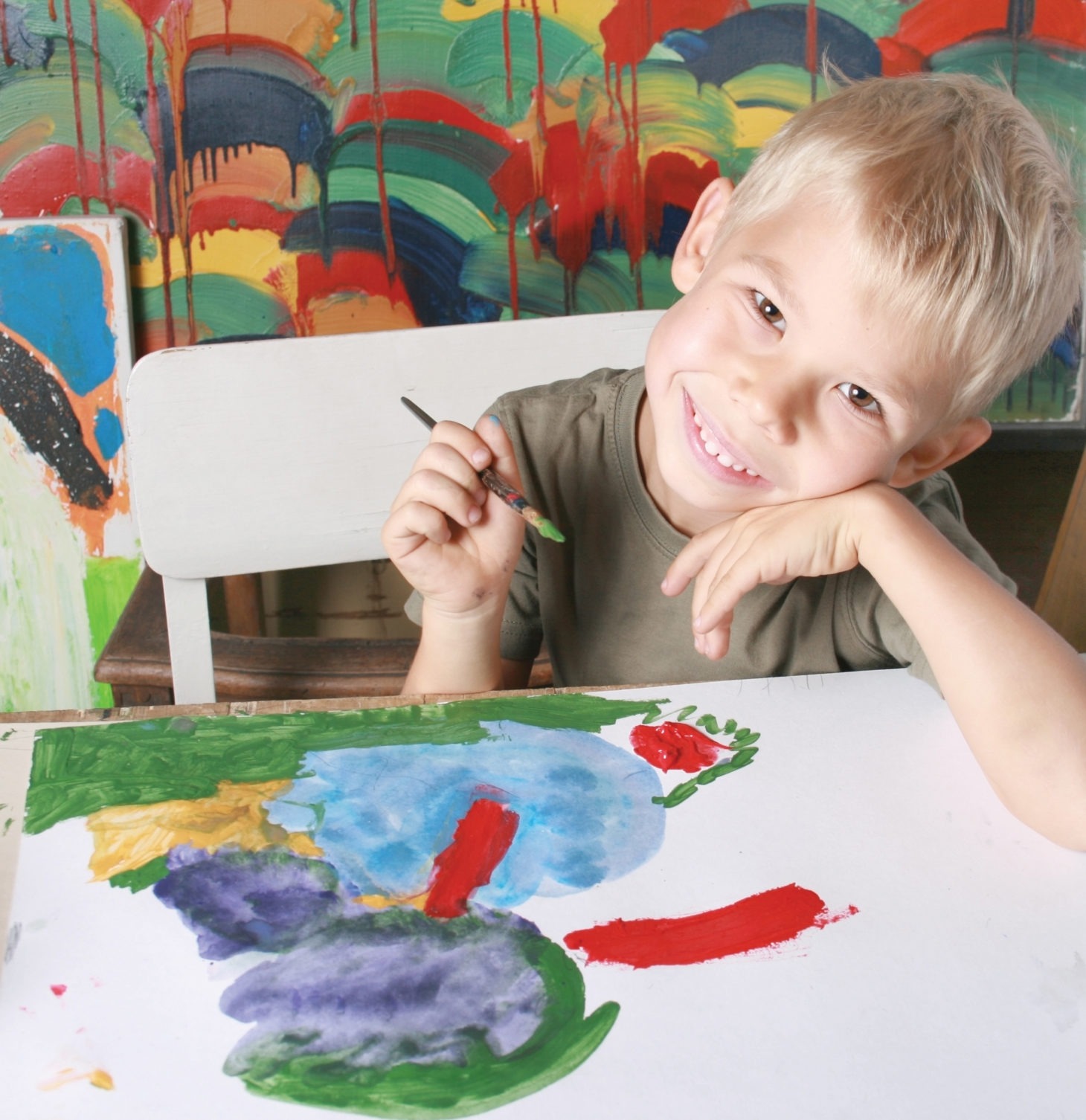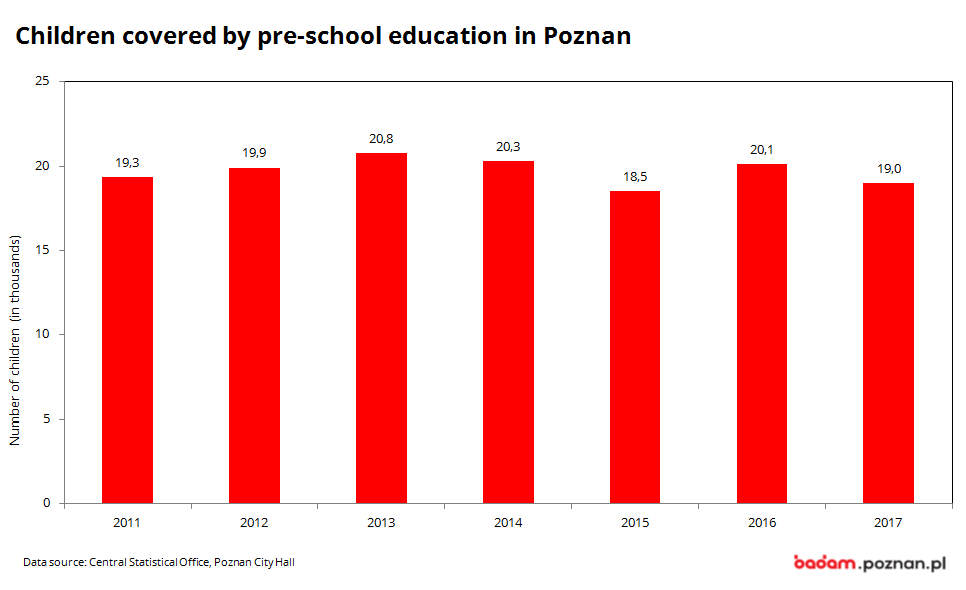Pre-school education
 Poznań City Hall’s archives
Poznań City Hall’s archives
In 2017, the City of Poznań undertook numerous measures to provide all children of this age with access to pre-school care.
Children covered by pre-school care
In Poznań, nearly 90% of children aged 3 to 6 were covered by pre-school care. Pre-school education covered: 22% of three-year-olds, 26% of four-year-olds, 27% of five-year-olds and 25% of six-year-olds. The share of children at the age of 6 in pre-school education facilities increased almost 6% compared to 2016.
In 2017, kindergartens run by the City provided care to 62% of the total number of preschoolers. This share decreased 11% in relation to the previous year. Over 200 children benefited from care in special kindergartens.
In 2017, the City of Poznań undertook numerous measures to provide all children of this age with access to pre-school care.
Institutional pre-school care
In 2017, institutional pre-school care was provided in 338 kindergartens and pre-school units in primary schools, including 170 pre-school facilities run by the City of Poznań, and 14 day care points. They had a total of 22.6 thousand places of pre-school care and covered 21.9 thousand children with this care. The subsidy from the City budget covered 13.8 thousand places, i.e. 62% of the total.
New places of pre-school care
In 2017, almost 1.3 thousand additional places were provided in public facilities, including 250 in the kindergarten run by the City of Poznań, and over 0.6 thousand places in non-public kindergartens. A new 10-unit kindergarten was opened in Strzeszyn.
Improving conditions of pre-school care
As part of the EU project “Active Forms of Pre-school Education,” activities related to the organisation of didactic rooms and development of kindergarten gardens were carried out.
The implementation of the municipal “Programme of Modernisation and Extension of Playgrounds in Kindergartens for 2016-2020” was continued.
Extracurricular activities for children, including eurhythmics, foreign languages, sports activities, dance, speech therapy, were co-financed from the City budget.
“Nabór” internet system
The offer of kindergartens and recruitment were available in the “Nabór” online system run by the City of Poznań.
In 2017, the most-preferred kindergartens included:
- Grunwald – ul. Księżycowa, Kindergarten No. 46,
- Grunwald – ul. Perzycka, Maria Kownacka Kindergarten No. 36,
- Grunwald – ul. Junikowska, Orle Ganizdo Kindergarten No. 38,
- Piątkowo – os. J. III Sobieskiego, Królewna Śnieżka Kindergarten No. 174,
- Piątkowo – os. B. Chrobrego, Król Maciuś I Kindergarten No. 35,
- Piątkowo – os. B. Śmiałego, Kindergarten No. 189,
- Piątkowo – os. B. Chrobrego, Mali Europejczycy Kindergarten No. 148,
- Szczepankowo – ul. Skibowa, Hanna Zdzitowiecka Kindergarten No. 93,
- Wilda – ul. Prądzyńskiego, Kwiaty Polskie Kindergarten No. 42,
- Winogrady – os. Przyjaźni, Majsterklepka Kindergarten No. 140.
PLN 928 – the average cost of living of a child in a pre-school education facility
0.99 – the average number of children per one place in a pre-school education facility
Number of vacancies in kindergartens in 2017:
• in kindergartens – 201
• in pre-school units at primary schools – 270
PLN 16 – the average monthly subsidy of the City of Poznań for additional classes in pre-school education facilities per one child
Number of children up to 6 years inclusive in kindergartens in Poznań
| 2000 | 2005 | 2010 | 2014 | 2015 | 2016 | 2017 | 2000=100 | |
| Children (in thousands) | 13,9 | 13,8 | 16,5 | 17,6 | 16,7 | 18,1 | 19,3 | 138,8 |
Source: Poznań City Hall
Number of children in kindergartens up to the age of 6 inclusively in the largest cities (2016)
| Poznań | Kraków | Łódź | Warszawa | Wrocław | |
| Children (in thousands) | 18,1 | 29 | 21,4 | 73 | 23 |


 Zobacz
Zobacz
